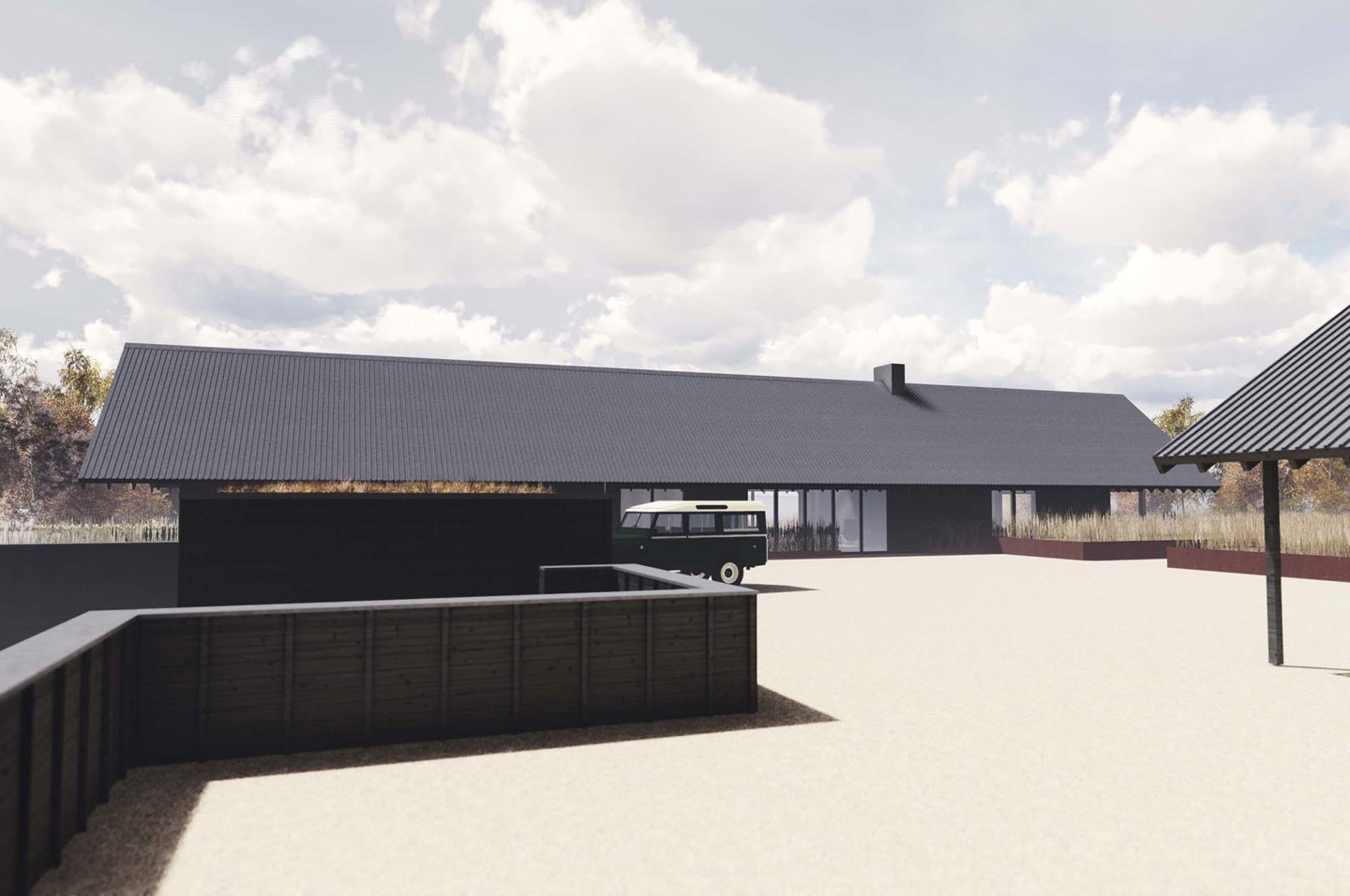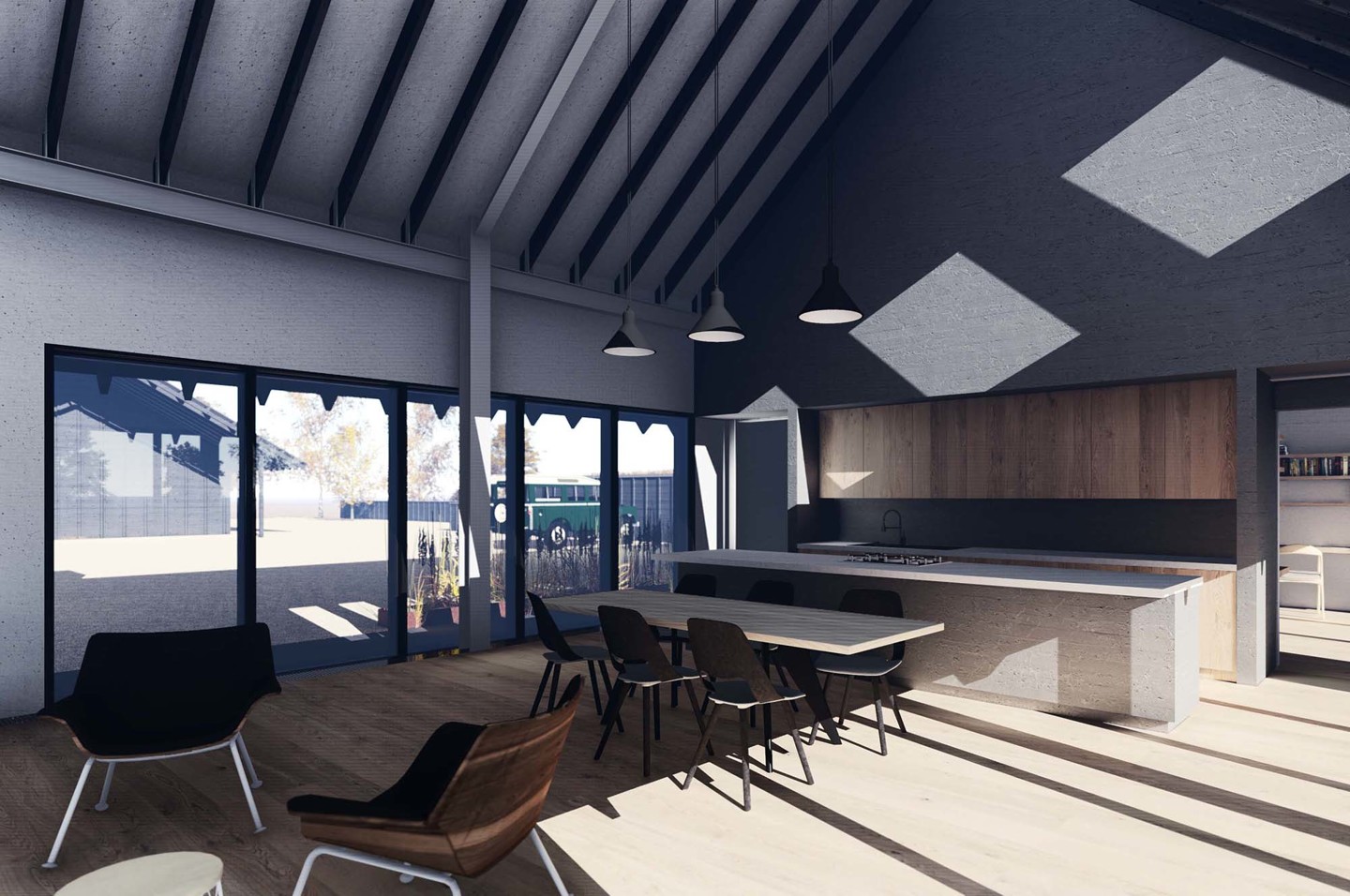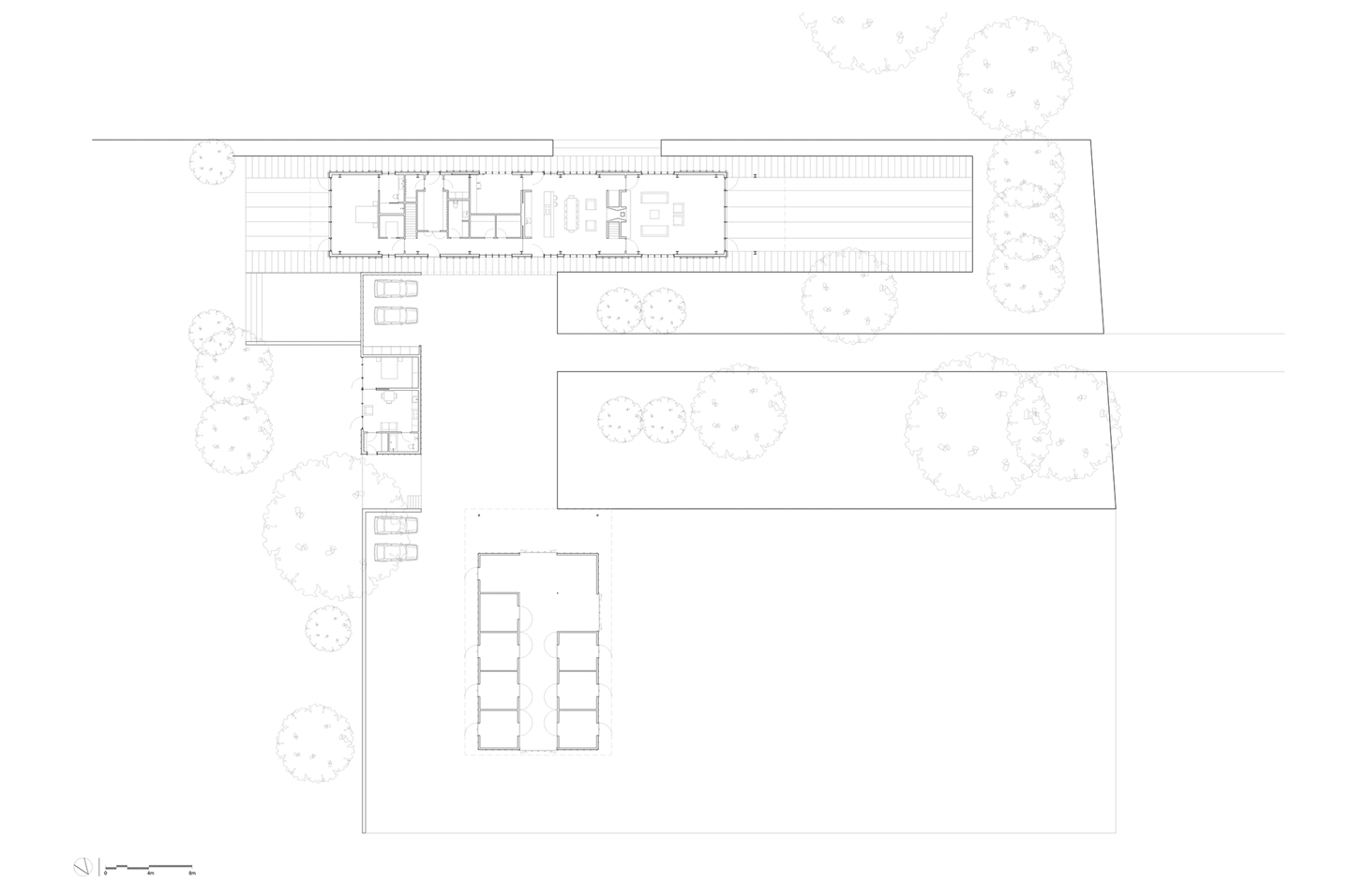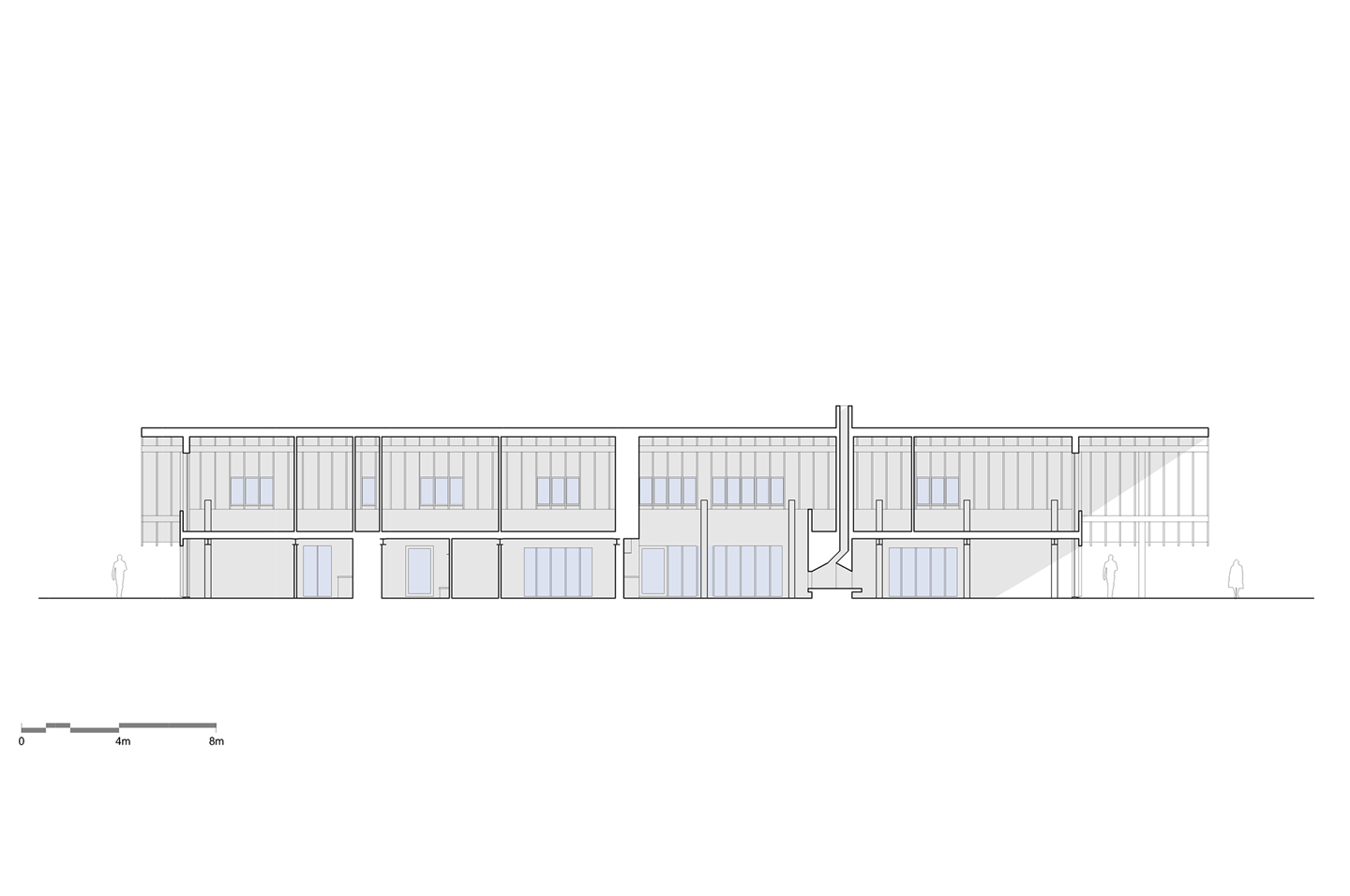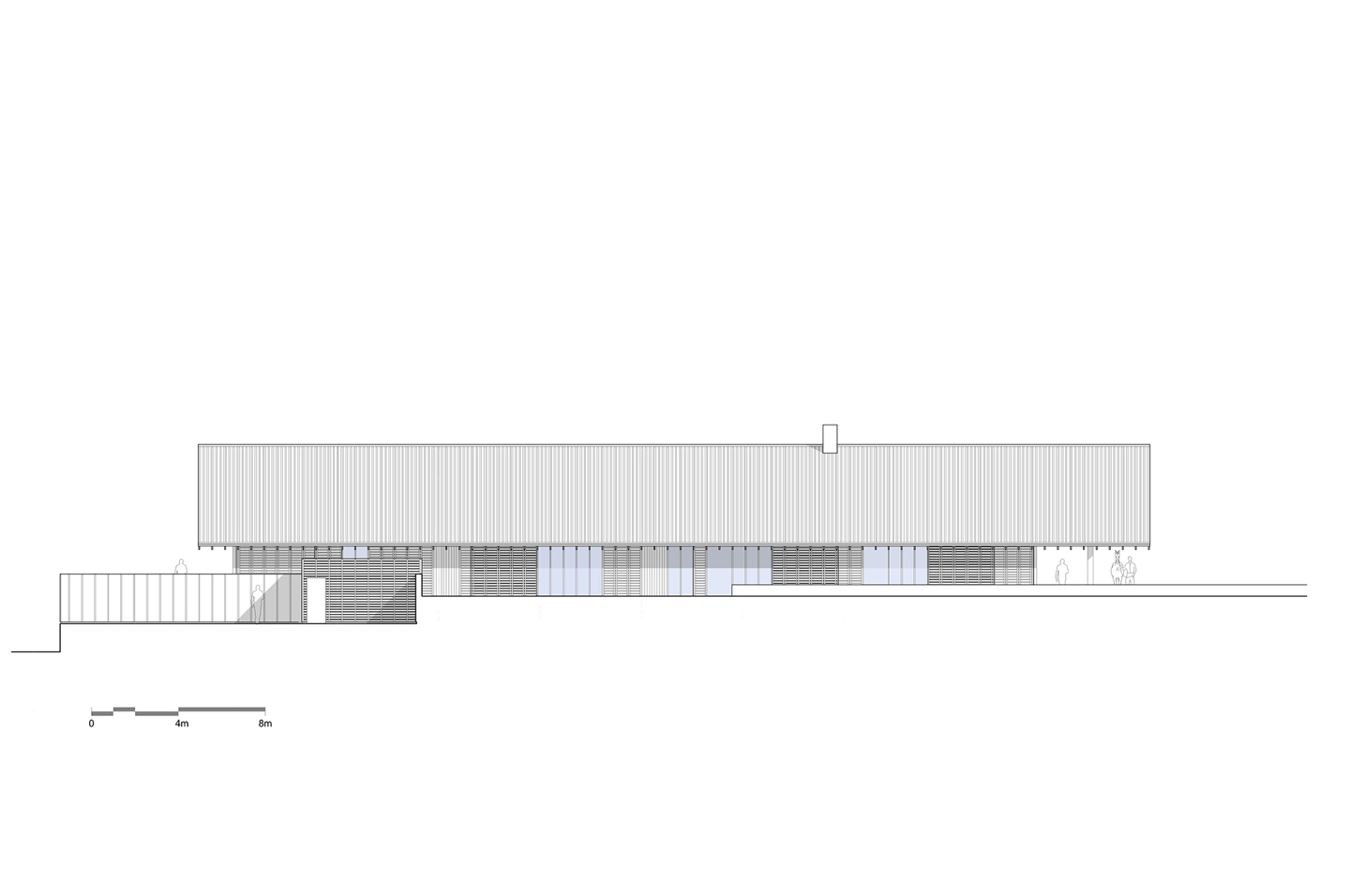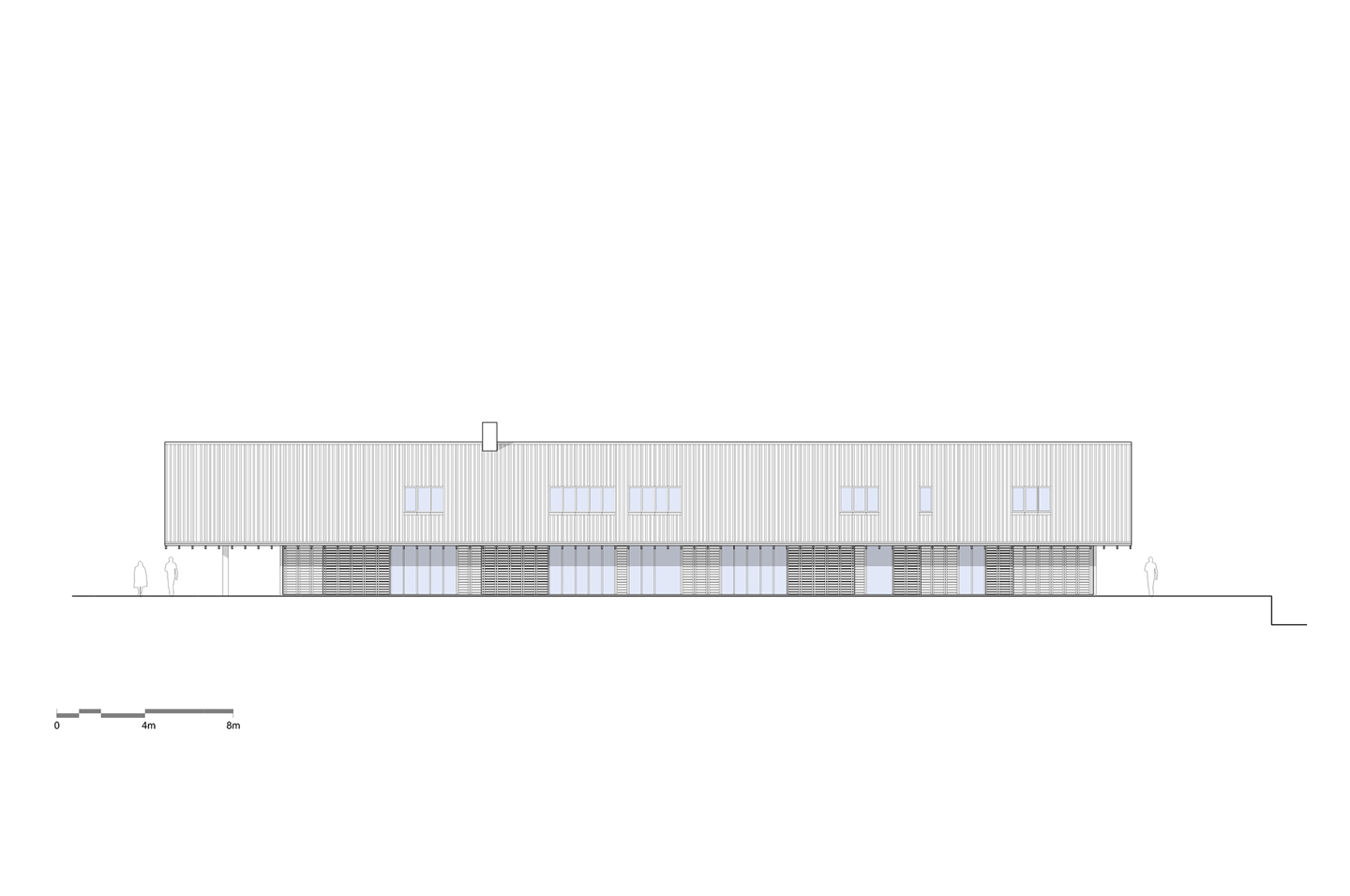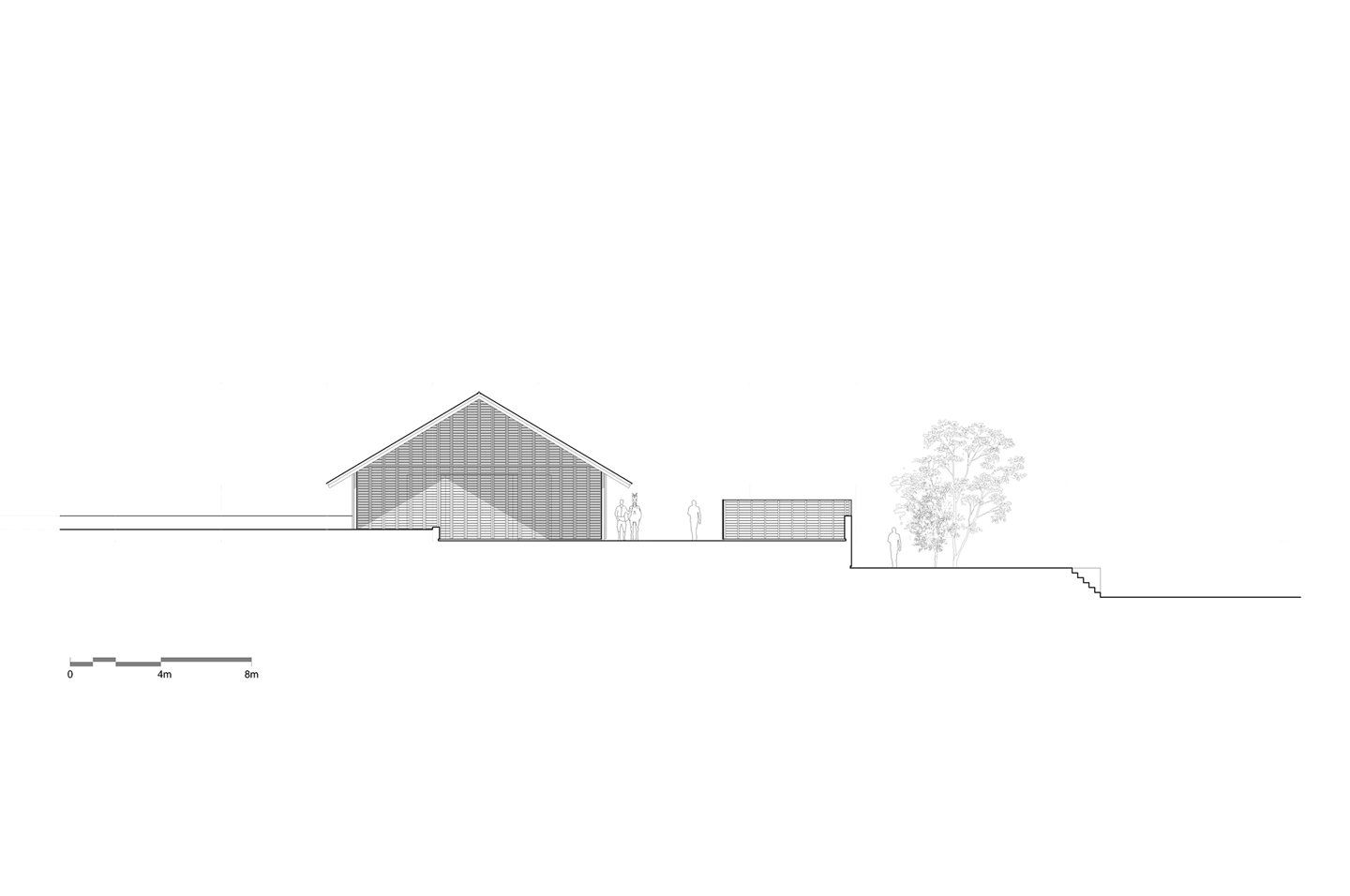Reflections on architecture
Rutherford Burnside
June 3rd, 2016GRAS have been granted planning permission for a new farmhouse, studio flat, and stables on the edge of a cluster of existing working farm buildings on the Scottish Borders. RB House will be a contemporary building in a rural setting, which makes a clear departure from the traditional notion of a farmhouse. Inspiration for the form and materiality of the building has been drawn from the agricultural vernacular of the adjacent farm buildings and those found throughout the broader Tweed Valley. The new accommodation is conceived as a reinterpretation of these large, utilitarian sheds and barns, built from readily available and low-cost materials, such as rough sawn timber, mild steel and profiled metal sheet roofing.
The house’s primary orientation follows the northeast to southwest orientation, which is apparent in the majority of agricultural and industrial buildings along the length of the Tweed Valley. On approach, the building appears as a simple, low-slung pitched roof built in corrugated sheet metal supported by a functional steel and glass frame, a ubiquitous form throughout the Borders. Overhanging eaves soften the building’s edge, blurring the threshold from inside to out and heightening engagement with the surrounding landscape. Beneath the eaves and the projecting gable roofs, a continuous terrace runs around the perimeter of the house creating a series of covered spaces of varying scales and outlooks. Continuous timber walls, running the length of the house are broken by sliding screens, which can be drawn aside to reveal floor to ceiling glazed openings. These glazed screens also slide away so that living spaces can be opened up to the terraces on all elevations. This series of internal, covered and external spaces combined with the layered façade provides adaptability to suit seasonal uses. A rational plan with generous circulation both inside and out provides a series of single and double-height linked spaces, each with their own character, scale and framed views across the fields to the Cheviot Hills. Glazed gables provide focused views to the farm steading and to the forested areas to the northeast.
The discreet studio-flat, built into the terraced landscape, makes use of the natural gradient and providing privacy from the main house. Its façade ties into timber fences, which define the terrace edges while a planted roof connects it with the terraced landscape. The stable block, studio-flat, and house are grouped around the terraced landscape to define a series of external spaces for different functions ranging from the more public entrance courtyard to private garden terraces. The terraces provide a degree of delineation to an otherwise untamed landscape, allowing wild meadow grasses and wildflowers to grow in and around formally defined spaces.




